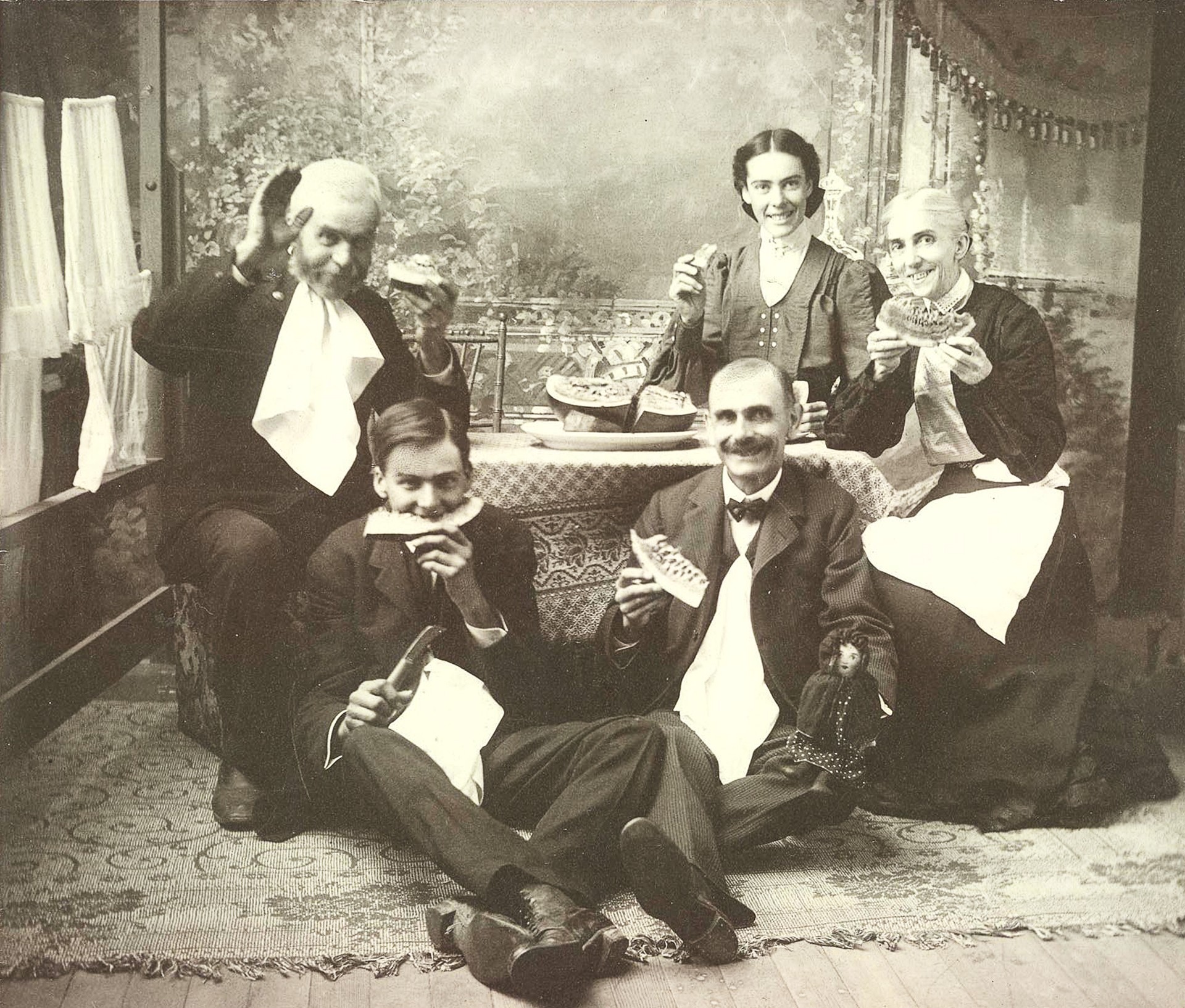National Expressions: Rethinking the History of the Photographic Smile
Friday, September 13, 2011, at 18:30
Concordia University, EV-1.605
 Unknown photographer, Group portrait with watermelons, c. 1900, private collection.
Unknown photographer, Group portrait with watermelons, c. 1900, private collection.
Tanya Sheehan
Rutgers, The State
University of New Jersey
Scholars have consistently equated the emergence of the toothy smile in photography with the popularization of the snapshot at the turn of the twentieth century. Decades earlier, however, enterprising studio photographers in the United States pictured the widely grinning mouths of newly emancipated slaves or of African American children eating watermelon. These images, in turn, set the stage for white Americans to appropriate the smile as a form of racial caricature within their own photographs. This lecture takes these comic performances for the camera seriously by reading them as deeply embedded in the social politics of the United States. It then calls for other histories of photography to ask how and why national conceptions of social difference have framed the medium's most entrenched conventions, like the smile.
Tanya Sheehan is an assistant professor in the Art History Department at Rutgers, The State University of New Jersey, where she teaches courses on race and representation, art and science, and the history of photography. She is the author of Doctored: The Medicine of Photography in Nineteenth-Century America (University Park: Pennsylvania State University Press, 2011), which explores the relationship between studio portrait photography, medical discourse, and social identity. Dr. Sheehan is currently writing a book that examines ideas about race in early photographic humor, a selection of which has been published in the journal Photography & Culture. For this project she has recently received fellowship support from the National Endowment for the Humanities and the W.E.B. Du Bois Institute for African and African American Research at Harvard University.

